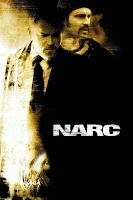Ethno-racial Data Collection and the Future of Community Wellness
Ontario’s Ministry of the Solicitor General has allocated 200 million dollars for the years 2019 to 2022, in support of the Community Safety and Well-Being Strategy. A key part of this updated strategy is the idea that,
“…the majority of investments, time and resources should be spent on developing and/or enhancing social development, prevention and risk intervention strategies to reduce the number of individuals, families and communities that reach the point of requiring an incident response. Developing strategies that are preventative as opposed to reactive will ensure efficiency, effectiveness and sustainability of safety and well-being service delivery across Ontario.”
And so you would think this would mean investing most of that funding into community organizations and preventative health strategies. Yet approximately 99% of the 2019 budget went to police forces (Toronto Police Services received $55.4 million on top of their budget of over 1.06 billion). This is one recent example of how a reallocating of police funding could better be spent to help communities, in this case, in the words of the government itself. This idea of reallocating funding where police services have failed to aid community wellness, is at the centre of the “Defund the Police” movement.
Another recent example of funding for community health and wellness being allocated to furthering the police budget is in response to Josh Matlow and Kristyn Wong-Tam’s motion to Defund the Police by 10% along with a series of other community-based demands. The result (in terms of funding) was 50 Million dollars from the City of Toronto allocated to police for bodycams over the next 10 years.
Cheryl Prescod (Executive Director of the Black Creek Community Health Centre) weighed in on the connection between race, health and bloated police funding. These highly interrelated topics, has been widely brought to the mainstream media’s attention in large part thanks to the Black Lives Matter movement. Remarking on the movement’s response to initial criticisms leveled against them for organizing street protests during a COVID pandemic, Cheryl argues that their perspective is, “I’m not going to die of COVID. I’m going to die of racism,” says Prescod. “That’s much more of a threat to me than even COVID.”
Prescod and Paulos Gebreyesus (Regent Park Community Health Centre Executive Director) are two members of a Coalition of Black Health Leaders of the Alliance for Healthier Communities. The Alliance put out a statement further elaborating on the interconnections between health, policing and race.
“‘Good health’ is a product of access, social, cultural and economic factors. Similarly, structural and systemic inequalities are contributors to poor health outcomes.”
“Research continues to validate what our communities know from lived experience; the continuing legacy of anti-Black racism means that Black people experience disproportionately higher rates of poverty, poorer health outcomes and we are overrepresented in the criminal justice system.”
In a later statement, these Black Health Leaders in Toronto made the following suggestion (among others related to ethno-racial data collection):
“[We therefore demand] the collection and use of socio-demographic and race-based data in health and social services now as relates to COVID-19, and more expansively to inform overall health system planning and resource allocation.”
Cheryl explained to me that, “when COVID started [the Black Health Leader’s Coalition of the Alliance for Healthier Communities] were reading [the data] about people in the U.S. who are poor, black, Latino, living in shelters, living in precarious situations-- these were the people hardest hit and dying from COVID. We [have long known] that the same things are happening in our communities.”
Some of the figures from those American COVID-19 race-based statistics are as follows:
“Nationally, African-American deaths from COVID-19 are nearly two times greater than would be expected based on their share of the population. In four states, the rate is three or more times greater.”
“In 42 states plus Washington D.C., Hispanics/Latinos make up a greater share of confirmed cases than their share of the population. In eight states, it's more than four times greater.”
The city of Toronto itself has begun collecting race-based data (in part, in response to pressure from activists in Toronto fighting for health equity) and put out a statement on the City of Toronto website stating:
“There is growing evidence that racialized populations and low-income groups are more at risk of COVID-19. The reasons for this are unclear but could include; Existing health disparities linked to social and economic factors ; Stress caused by racism and other forms of discrimination; Challenges in participating in the public health response to COVID-19, including difficulties in limiting COVID-19 exposure because of being an essential worker, and difficulties in physical distancing because of overcrowding; [and finally], Inequitable access to health care and social services”
The City’s findings identified that Arab, Middle eastern, West Asian, Black, Latin American, South Asian, Indo Caribbean and South East Asians are overrepresented in the data in terms of the rate of COVID-19 cases among specific ethno-racial groups versus the overall COVID-19 rate for Toronto.
Whether or not one agrees with a full abolition of policing in Canada or a 50% redistribution of the 1.2 billion dollar gross operating budget for 2020 (plus part of the grants such as the 199 million dollars from the Ontario’s Ministry of the Solicitor General and the City of Toronto’s 50 million dollars for bodycams), or you don’t think the police budget should change at all, one thing is clear. Prevention, risk intervention and generally avoiding violent incident policing responses, are the way of the future, and nowhere is that of more urgent import than in racialized communities like Black Creek and Regent Park.
By Fabio Heredia-Caslins
(Fabio is a journalist with the FOCUS Media Arts Centre)


Comments
Post a Comment